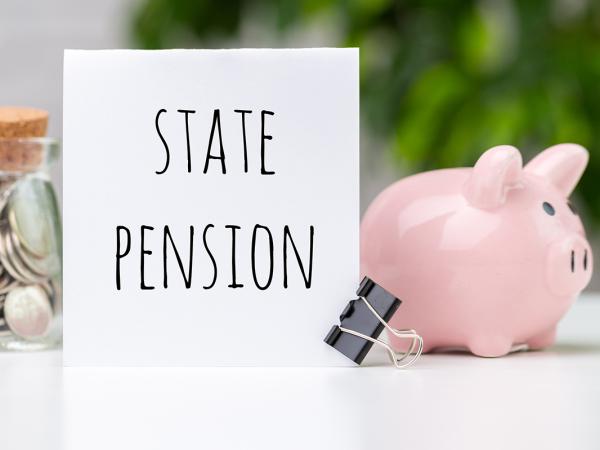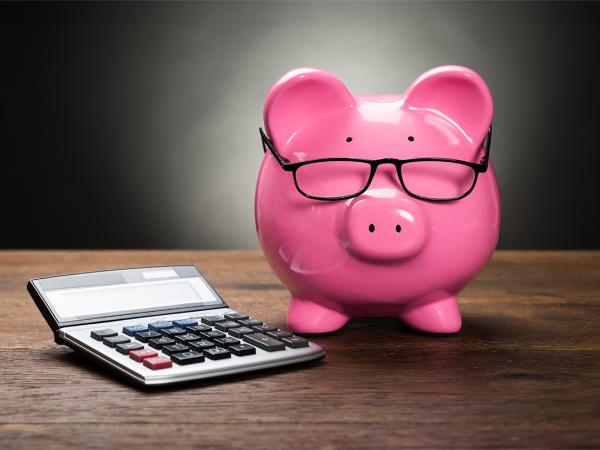National Insurance and the state pension
National insurance is very important for the purposes of claiming the state pension. On this page we look at the part National Insurance contributions play in your entitlement to this state benefit later in life.

Content on this page:
Introduction
To be eligible to claim a state pension when you reach state pension age, you will need to have enough qualifying years on your National Insurance record. Your National Insurance record is built up from age 16 up until you reach state pension age.
The number of qualifying years you need to have on your record differs depending on whether you are claiming:
- the new state pension – for those who reached or will reach state pension age on or after 6 April 2016. To get the full new state pension, you usually need 35 qualifying years.
- the basic state pension – for those who reached state pension age before 6 April 2016. The number of qualifying years you need varies between 30 and 44.
On this page we deal with requirements for the new state pension.
Qualifying year
A ‘qualifying year’ is a year when sufficient National Insurance contributions (NIC) have been paid (or been treated as having been paid), or where you have received National Insurance credits.
- Class 1 NICs are calculated and paid over under PAYE each time an employee is paid, provided the employee earns over the primary threshold. If you earn less than the primary threshold but more than the lower earnings limit, you will be treated as having paid Class 1 NIC for that pay period. You can read more about this on our page NIC for employees.
- Self-employed people earning over the small profits threshold are, from 6 April 2024, treated as paying Class 2 NICs. Those with profits below £6,725 a year can continue to pay class 2 NIC to keep their entitlement to certain state benefits. You can read more about this on our page NIC for the self-employed.
- Class 3 NICs – are payable per week. See ‘Increasing your state pension entitlement’ below.
- National Insurance credits (NI credits) are made for specific weeks in a tax year. For example, if you receive carer’s allowance for the first four weeks of the tax year, your NI credits relating to the carer’s allowance are made for those specific four weeks.
The easiest way to explain the concept of the qualifying year is to look at examples. The position for employees is slightly more difficult, so we consider other individuals first. The examples do not cover all possibilities and you should check your position with HMRC before deciding whether you should pay voluntary NIC. Also, note that if you ever paid NIC at the contracted-out rate, your state pension may be less than the full amount. We discuss this in more detail later in this page.
- Self-employed for full tax year (and does not receive NI credits)
-
The individual needs to have paid, or be treated as having paid, Class 2 NIC for the full tax year to make a qualifying year.
That is, they need to have paid, or be treated as having paid, 52 weeks’ worth of Class 2 NI contributions.
- Receives NI credits for full tax year
-
The individual has a qualifying year.
- Self-employed for part of tax year and receives NI credits for part of tax year
-
The important thing is that the individual needs to have paid (or be treated as having paid) Class 2 NIC or have received NI credits for each week of the tax year.
It is not sufficient that someone pays 26 weeks’ worth of Class 2 NIC and receives 26 weeks’ worth of NI credits: if that individual has received NI credits for a week for which they have also paid (or have been treated as having paid) Class 2 NIC, there will be a week for which no NIC has been paid or credited.
That individual could choose to pay voluntary Class 3 NIC for that week, if they wanted to make up a qualifying year for state pension purposes. We explain more about voluntary NICs later in this page under the heading ‘Increasing your state pension entitlement’.
- Employed for whole of tax year and receives no NI credits
-
A qualifying year is generally a tax year in which an individual has paid (or is treated as having paid) NIC or was credited with NIC on earnings of at least 52 times the lower earnings limit (LEL).
The weekly LEL for the 2024/25 tax year is £123. This means you need to have earned at least £6,396 (for 2024/25), but you need to exclude any week where you earned less than £123.
This means you could satisfy a qualifying year by earning £300 for 25 weeks in the tax year and only earning £100 in total for the other 27 weeks of the year; but you would not satisfy the condition if you earned £300 for 10 weeks and then £100 for the other 42 weeks of the year. We explain what is meant by the LEL and being treated as having paid NIC in more detail in our employment section.
- Employed for part of tax year and receives NI credits for part of year
-
Despite only working for part of the year, you may have earned enough to have a qualifying year without the need for NI credits. Read the paragraph above.
Otherwise, you will need to work out how many weeks’ contributions your employed earnings qualify you for and then add on the number of weeks you get NI credits for (but remember that if you earn over the LEL for that week, you cannot count NI credits you receive for that same week). If there is a gap, you could choose to pay voluntary Class 3 NIC for that week, if you wanted to make up a qualifying year for state pension purposes. We explain more about voluntary NICs below under the heading ‘Increasing your state pension entitlement’.
Increasing your state pension entitlement
Your state pension is based on your National Insurance record when you reach your state pension age. It is possible to boost your National Insurance record through making voluntary contributions.
If you are not yet of state pension age, but perhaps have stopped work to care for someone – you might be able to boost your National Insurance record through claiming credits.
Number of qualifying years needed
The number of qualifying years you need depends upon when you reach pension age. This page only looks in detail at the new state pension. You usually need to have paid (treated as paid) or been credited with 35 years of National Insurance contributions in order to qualify for a full new state pension.
You will usually need at least 10 qualifying years of National Insurance contributions or credits to qualify for any state pension. If you do not have 10 qualifying years in the UK but you have made social security contributions in another EEA member state or Switzerland over the course of your working life, or a country with which the UK has a bilateral social security agreement, your periods of overseas contributions can help you satisfy this condition.
This is called the aggregation principle (see our International section for more information). This essentially allows you to consider periods of overseas social security contributions where necessary, in order to meet the minimum UK requirements to qualify.
Voluntary contributions
It may be possible to pay voluntary National Insurance contributions if there are gaps in your record to increase your pension entitlement. You should note that there are time limits for doing so. Voluntary contributions may be either:
- Class 2, if they are for a period when you have been self-employed but not earning enough to have to pay those contributions (or to be treated as having paid contributions), or you have been employed or self-employed overseas; or
- Class 3 in other cases. They cost £17.45 a week for the 2024/25 tax year. Someone who has not worked at all during 2024/25 may need to make 52 weeks’ worth of Class 3 contributions to make it a ‘qualifying year’ at a cost of £907.40. Someone who has already worked for part of the year, may need to make fewer Class 3 contributions and therefore pay less. For more information on Class 3 contributions see GOV.UK.
Before making any payment of voluntary contributions you should:
- Check your NIC record through HMRC’s Personal Tax Account to see how many qualifying years you have already accrued and your future potential to make up any gaps. This will help you decide whether it is necessary to make voluntary contributions.
- Check with the Future Pension Centre that it is in your best interests to do so and that payment will increase your pension entitlement.
- You may also want to get independent financial advice – the government’s MoneyHelper website has information on choosing a financial adviser.
Some people pay Class 3 when they are going abroad. You can find out more about NIC when going abroad in HMRC’s guidance NI38.
Contracted-out NICs
Under the old system, the state pension was made up of two parts:
- the basic state pension, and
- additional state pension, sometimes referred to as state second pension or SERPS (State Earnings-Related Pension Scheme).
As we explain on our state pension page, it was possible to be 'contracted-out' of the additional state pension. This means that you would have paid a lower rate of NICs and may have earned replacement pension benefits in an employer scheme or a personal pension.
Those affected will include public sector employees – civil servants, NHS employees, police officers, teachers and members of the armed forces.
The introduction of the new state pension from 6 April 2016 brought an end to the contracting-out rules. From 6 April 2016, no-one can be contracted-out.
From April 2024, the full new state pension is £221.20 per week, but if you were an employee who paid National Insurance contributions at the contracted-out rate this could affect the amount of state pension you will receive in the future.
Checking if you were contracted-out
Many people may not have realised that they were contracted-out. One way to check would be to look at an old payslip – one from before April 2016. If it shows the letter “D” or “N” on the National Insurance line, this means you were contracted-out. Letter “A” would mean you were not contracted-out.
If you have, or previously had, a married woman’s reduced rate election and were contracted-out your payslip would show the letter “E”. Letter “B” would mean you were not contracted-out.
Effect on new state pension entitlement
If you were contracted-out then, despite having 35 years of National Insurance contributions, you may not necessarily get the full amount of the new state pension per week – although you may be able to improve your entitlement by paying contributions after 5 April 2016. While you will get less than the full amount of new state pension per week, you will still be paid at least what you would have got under the old state pension.
The rules around contracting out and new state pension are complicated. Detailed guidance on how the transitional arrangements apply and examples can be found on GOV.UK.
You can check your future state pension entitlement on GOV.UK and, if you do not agree with the information held, contact HMRC.



